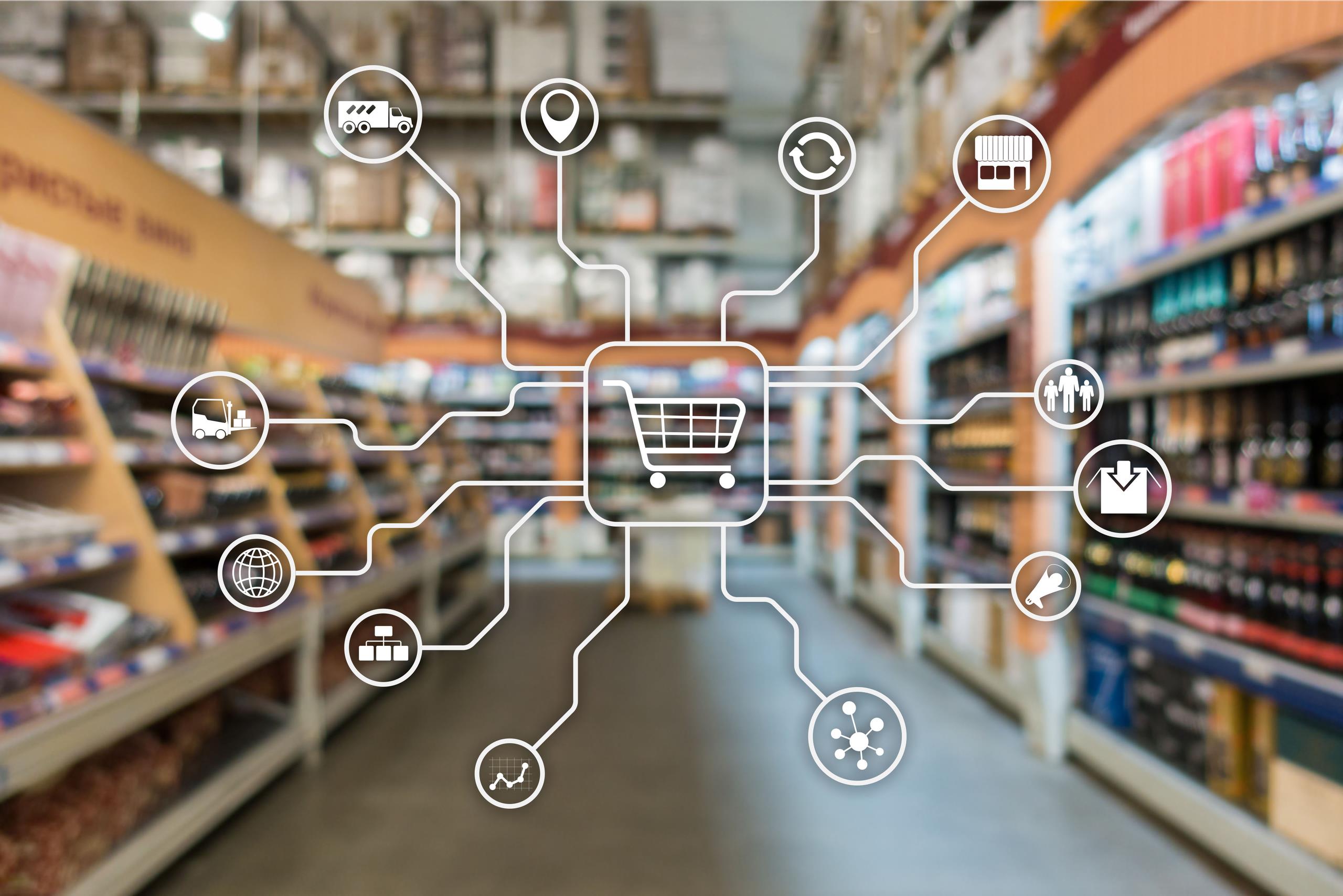In May 2020, when KPMG released their Future Forecourt Retail Market report, the headline statement outlined a dramatic move away from revenue generation from fossil fuels, which ten years ago made up 90% of sales, to a greater reliance on additional services such as food and beverages and mobility services. The report predicts that in the next ten years fuel will make up just 20 percent of sales on site. Now with COVID-19 accelerating the pace of change, how can fuel retailers best prepare themselves? erpecnews spoke to Paul Martin, UK Head of Retail at KPMG and author of the report who outlined his top tips for future proofing your fuel station business.

Business models
As fossil fuels take more of a back seat, fuel sites will need to look for new ways to drive profits and enhance operational efficiency.
“Oil majors have historically generated the majority of their revenue from the upstream operation, or in the distribution of fuels. They have now perhaps learnt over the last couple of years that the non-fuels component of their business could actually be the biggest growth driver,” explained Paul.
In fact, the HIM & MCA Insight UK Forecourt Market Report 2020, cited in KPMG’s report, found that only 19% of forecourt shoppers cite fuel as their main reason for visiting a forecourt.
The increased importance of the non-fuel offering has seen retailers up their game – improving food and product offerings, creating partnerships with recognised convenience or food-to-go brands, and redesigning their stores to meet the demands of the modern consumer. The experience also extends beyond the physical store as digital tools allow retailers to redefine the customer relationship.
“You need to have a really detailed look at your business model and don’t forget how you can build an online adjacency connected with your physical location. Your physical location is the bridge house between the online and offline world,” said Paul.
Contactless payments and online ordering are two services that have experienced significant growth since the start of the pandemic, as safety becomes increasingly important for the modern consumer. Embracing digital tools, however comes with its own set of challenges and Paul believes that building partnerships across the value chain will be essential for retailers moving forward: “Historically you would source good product, ship product and sell product and if you were good at it you opened more physical locations. Today, you need to know the customer, you need to think about artificial intelligence and there are also regulatory challenges as well as health and safety challenges. You really need to think about which partners you can utilise in that value chain and don’t try and solve the problem yourself if it’s too complicated.”
New business models

Mobility trends are changing and this will have a dramatic impact on the forecourt as we know it. Electric vehicles, connected cars and autonomous vehicles create new opportunities for forecourt operators to create new business models. EVs, for example, offer the potential for new partnerships between forecourt retailers, carmakers and energy providers to take charging beyond the forecourt, whilst also reinventing the forecourt with electric charging in mind. Another major disruptor to the industry is mobility as a service – a move away from asset (vehicle) ownership, towards a mobility ecosystem that encompasses things such as ride sharing and bike share schemes.
“What we are seeing in retail increasingly is a move towards integrated platform ecosystems and of course the fuel channel could be a very important part of a larger retail ecosystem in the future,” explained Paul.
“Now the question in that context, is what happens if a major tech giant suddenly decided to do fuels, what would that mean for the current set up? Would fuel become just an additional channel to all the different products and services they have, or is there an opportunity for the oil majors to say: “We can do an awful lot more.” Is there actually an opportunity to think about building an ecosystem around mobility?” He added.
Cost of doing business
“You need to focus on different ways of doing things, because I can guarantee you with the way costs are going, you need to think about how you can become 10-20% leaner every year. It’s a bit like painting the Golden Gate Bridge, once you’ve finished painting it after two years, you have to start at the beginning again. This is not a do it once and I can lean back in the armchair, it is that constant, constant drive that you need to be focused on,” explained Paul.
Digitalisation has the potential to transform the industry and whilst many retailers see the benefits, adoption is slow. Retailers are able to gain operational efficiencies through data driven insights that help them to better target their customers and the digitalisation of processes, which can reduce operational costs and improve productivity. Many retailers are partnering with digital specialists to help navigate this previously unchartered territory. "I know of one example where a retailer is leveraging Microsoft Surface devices (equipped with Office 365 and Power BI) to provide franchisees with insights into store performance and purchase trends, while also enabling them to analyse sale opportunities for example," added Paul.
Know your customer
“Retail for decades, and you could even argue for millennia if you look all the way back to Ancient Rome or Ancient Athens was all about a great location and great products and then you would open the doors and they, as in the consumer, would come. Today, you still need to have good locations and good products, but you really need to know who she or he is that you are interacting with,” explained Paul.
Paul believes that in the next 10 years, the word retail will become obsolete as we transition to what he calls “consumer commerce.” Increasingly businesses that sell products and services to the consumer will not have a legacy in physical stores.
“The key component here is becoming truly channel agnostic and customer centric. We are basically asking businesses to go from assets and product centric to customer centric and that is a significant shift in that context. You need to think about what type of partnerships, systems etc. you can utilise to make sure that the consumer that visits your location wants to come back.”
The partnerships and adjacent services can come in many shapes, but the key factor is to know what works for the customers visiting your site. The adjacent services that are starting to emerge can be broadly grouped into two areas: convenience which includes children’s play areas, co-working spaces, laundry and dry cleaning service, cash machines etc. and logistics such as last mile delivery services and click and collect pick-up points.
Digital tools can help retailers better understand their customers and provide them services and offers that are personalised to their needs. The report also suggests that future sites will look very different depending on the location, with inner city sites catered more towards convenience and highway sites focused on long-range customer journeys.
Purpose and reputation
Customers are becoming increasingly concerned about what a business stands for – and they are prepared to vote with their feet. As a business you need to send out messaging to a range of people from customers to shareholders – the key is to target the message to the right group, explains Paul.
“You need to showcase what you stand for and what good you are doing, not just to your financial and regulatory shareholders, but to the consumer and increasingly your employees. If you want your staff to be part of your journey, they need to buy in to what you stand for. The messages differ and that is really key. You may embrace ‘I’m going to be carbon neutral by year X’ which as a large business is a very important message, but if you’re servicing the local high street in say a city like Aberdeen for example, most consumers are not going to be interested about when you are carbon neutral, they want to understand what you are doing for the local community, how you are treating your staff.”
The fuel retail landscape is changing and it is critical that fuel retailers adapt to these global changes in order to thrive in the coming years.
“Pre-covid I would’ve said we are ten years away from these points becoming really critical, now I think we are 5-7 years away. In that context I do see organisations that are not prepared to make changes, just not being able to compete going forward. I do feel we will see about 30 percent of businesses in this retail space not survive in ten years from now,” Paul summarised.
You can read the full Future Forecourt Retail Market report at: https://assets.kpmg/content/dam/kpmg/ie/pdf/2020/09/ie-fuel-forecourt-retail-market.pdf